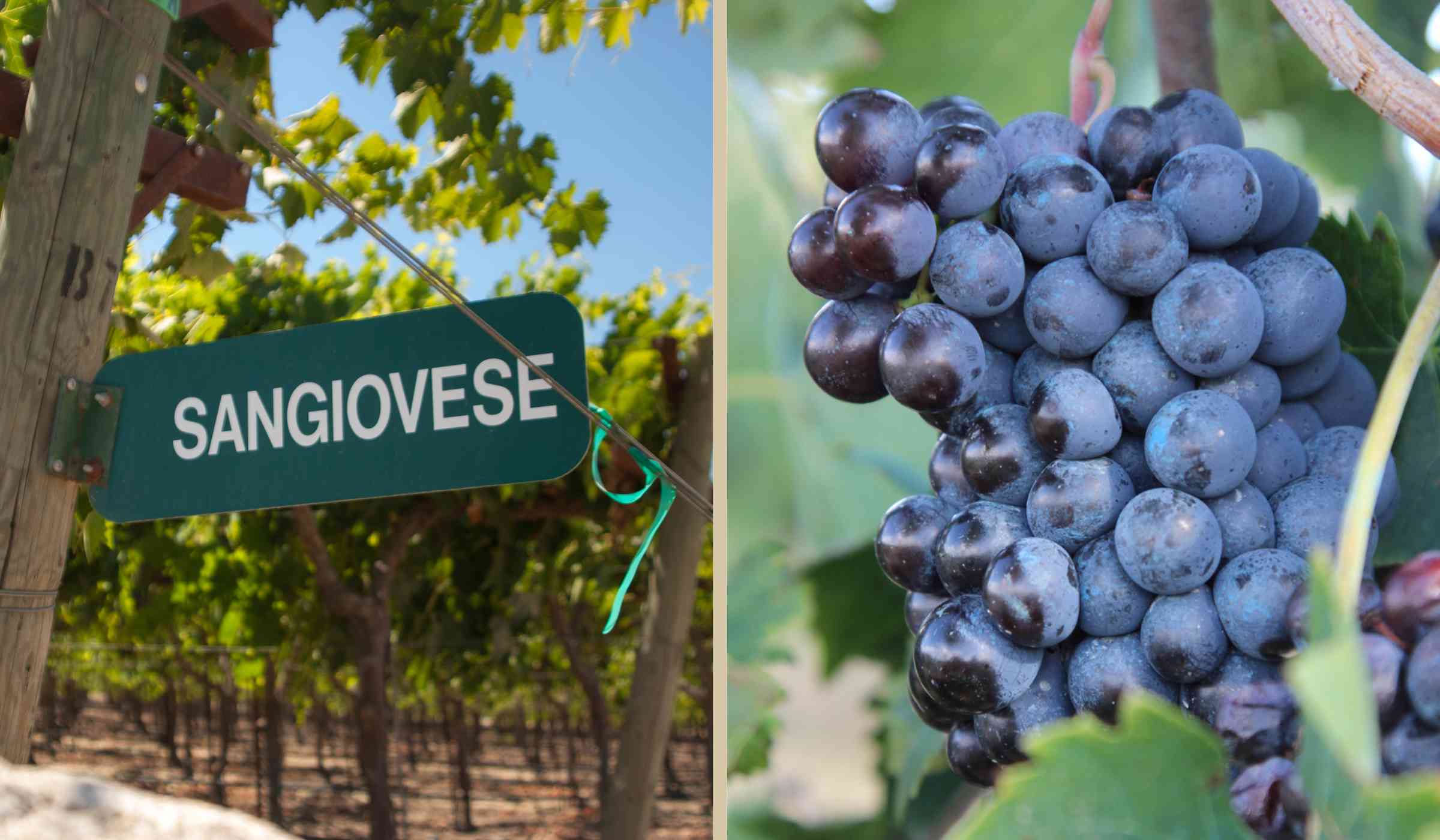Yes, Sangiovese should be chilled. The best temperature to serve Sangiovese is a little below room temperature at 59–65°F or 15-18°C.
Room temperatures have gotten warmer over time, so don’t be afraid to chill your Sangiovese a little to reach the right temperature.

Doing so will help to get the most out of your bottle, and allow the right balance of alcohol and aromas in your glass.
Sangiovese
- Serving Temperature: 59–65°F or 15-18°C
- Storage Temperature: 11°C to 15°C (51–59°F)
- Chilling Time: Up to 30 minutes
Chianti DOCG
- Serving Temperature: 59–65°F or 15-18°C
- Storage Temperature: 11°C to 15°C (51–59°F)
- Chilling Time: Up to 30 minutes
Montefalco Rosso
- Serving Temperature: 59–65°F or 15-18°C
- Storage Temperature: 11°C to 15°C (51–59°F)
- Chilling Time: Up to 30 minutes
Brunello di Montalcino
- Serving Temperature: 59–65°F or 15-18°C
- Storage Temperature: 11°C to 15°C (51–59°F)
- Chilling Time: Up to 30 minutes
Think of it like a fun, interactive Science lesson!
Here are some common styles of Sangiovese you may come across and the temperatures that they like to be served at.
Popular Styles of Sangiovese and Their Ideal Serving Temperature

Chianti DOCG
A Tuscan red wine giving Bordeaux a run for its money, serve your Chianti just below room temperature at 59–65°F or 15-18°C.
Montefalco Rosso
70% of these wines are Sangiovese and as a result they are soft, smooth and oozing with aromas of black cherry and perfumed violets, serve below room temperature at 59–65°F or 15-18°C.
Brunello di Montalcino
Bold, complex and intense, this isn’t a wine for the faint-hearted. Serve at around room temperature to get it at its best at 59–65°F or 15-18°C.
What is the Best Storage Temperature for Sangiovese?

The best temperature to store Sangiovese is between 11°C and 15℃ (51–59°F).
Think cellar conditions here, and try to store your Sangiovese as you would any other prized bottles of wine.
Aim for a good level of humidity, avoid direct sunlight where you can and keep your Sangiovese free from any unnecessary disturbances.
If you don’t have a wine cellar, your garage, kitchen pantry or even under your bed can be a good alternative to store your wine.
Should You Put Sangiovese In The Fridge?

Yes! If your Sangiovese isn’t cold enough for your liking then you can absolutely place the bottle in the fridge to chill it down a little.
Most houses are now a little warmer than the recommended serving temperatures for red wine, so a little bit of fridge time may do your Sangiovese a world of good.
How Long Should You Chill Sangiovese For?

If you have a specialist wine fridge the conditions will have been designed to look after your wine.
With red wine this means that you can set the fridge to your required temperature and won’t have to worry about your Sangiovese becoming too cold.
However, if you have a domestic refrigerator they run much colder so your Sangiovese won’t need to go in there for long.
Try placing your bottle in the fridge up to 30 minutes before you want to drink it.
And remember if it gets too cold it can always warm up on the side until it's ready to drink.
Here are some of our top tips on serving Sangiovese:
5 Tips on Serving Sangiovese
- Sangiovese like to be served a little under room temperature at around 59–65°F or 15-18°C.
- Most households run much warmer than this so don’t be afraid to place your Sangiovese in the fridge to chill it down a little.
- Wine coolers can help ensure your Sangiovese doesn’t go any colder than you want it to.
- Serve your Sangiovese in large, Bordeaux style glasses if you have them. This will help to balance out the aromas and the alcohol for a more refined drinking experience.
- Store your Sangiovese at cellar temperatures, between 11°C and 15℃ (51–59°F).
Before You Go...

Read our next article about chilling red wines correctly here...
Should Red Wine Be Chilled? (Full Guide)
If you have any questions, leave them in the comments, or email us at info@expertwinestorage.co.uk
Learn more about other Wine Types here.
You can also shop new wine coolers online at Expert Wine Storage



 Author:
Author:
Leave a comment (all fields required)